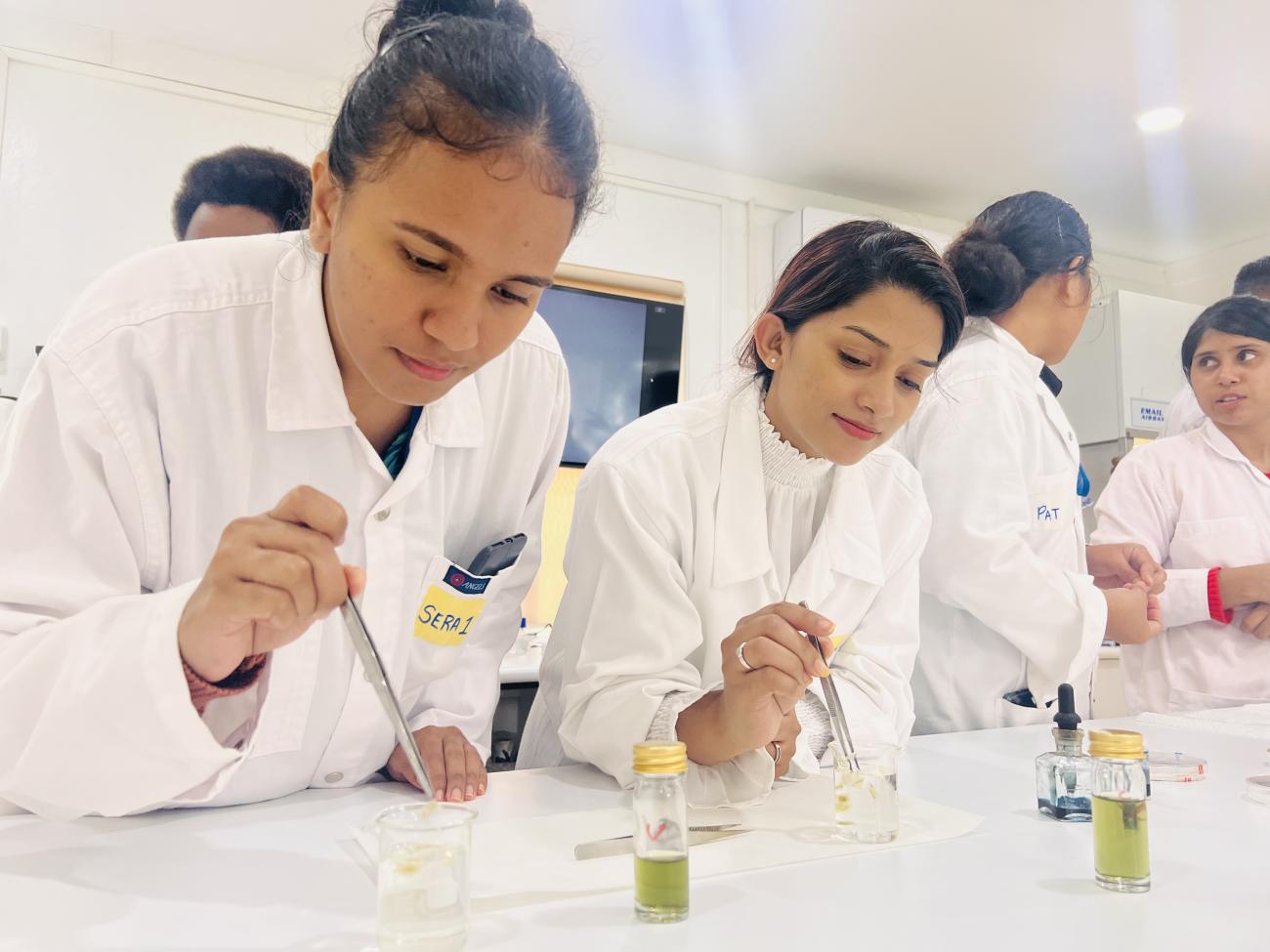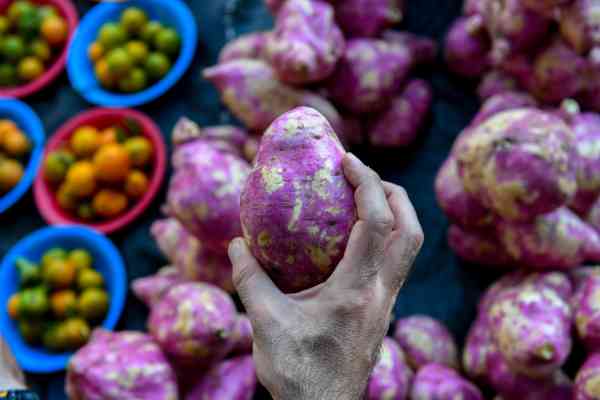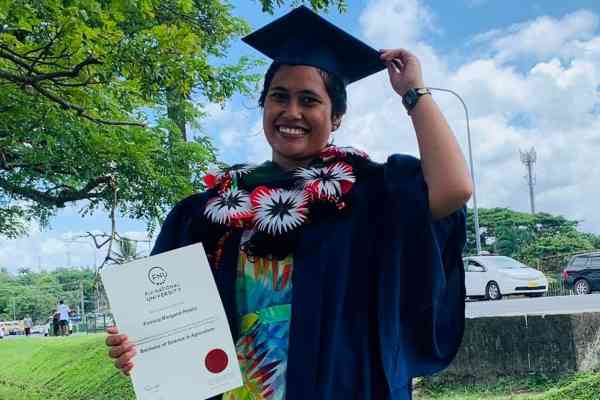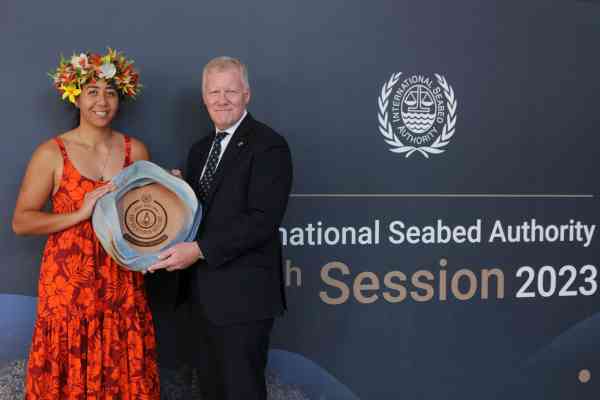SPC staff drying and staining yam leaf cuttings for viewing under the microscope to see fungal spores during the plant disease training.
Plant pathologists and lab technicians from The Pacific Community (SPC) and Fiji Ministry of Agriculture (MoA) underwent a training last week in Suva, Fiji to screen for a plant disease that affects two key Pacific crops – yam and chili. The training on anthracnose disease will build the skills of plant pathologists and technicians so that they are not only able to identify the disease correctly but screen local and exotic varieties for resistance.
Anthracnose is a term used to loosely describe a group of related diseases that typically cause dark lesions on leaves caused by Colletotrichum spp., a fungal pathogen.
The disease is one of the major economic constraints to chilli and yam production globally, especially in tropical and subtropical regions. In the Pacific, it has been recorded in Fiji, Papua New Guinea, New Caledonia, Niue, Samoa, Solomon Islands, Tonga, and Vanuatu.
Jointly supported by SPC, the MoA and the International Atomic Energy Agency (IAEA), the training brought two world experts in anthracnose research, Dr Paul Taylor from the University of Melbourne and Dr Orarat Mongkolporn, from Kasetsart University in Thailand, to teach SPC and Fiji MAF staff on methods to isolate and culture anthracnose, identify species through morphology and molecular techniques and screen for anthracnose resistance in chili and yam.
“Globally there’s around 340 odd species of Colletotrichum and they infect a wide range of hosts,” said Taylor. “So just about all agricultural commodities can be infected. It reduces marketability and reduces yield and growth of plant or production.”
The training program involved interactive discussions about aspects of Colletotrichum from its taxonomy to its biology, right through to looking at host pathogen and interactions. Participants then looked at how to screen plants for resistance to mitigate for anthracnose disease. SPC Lab technician Sera Dau said an interesting aspect of the training was observing the different aggressive levels of the fungal pathogens that can affect staple crops in the Pacific.
“As Pacific people, we are known to rely heavily on agriculture for consumption and for our economic livelihood,” said Dau. “This workshop has helped me understand the importance of pathogens and their interactions with plant hosts and how to reduce spread and infection. It has really broadened my knowledge and skill which I hope to take with me back to CePaCT (SPC Centre for Pacific Crops and Trees), which is always looking at identifying resistant varieties that can withstand abiotic and biotic stress.”
With her extensive research on the chili crop, Dr Mongkolporn mentioned that the quest for chilli varieties resistant to anthracnose is still ongoing.
“Chilli is an important crop in Thailand, we can’t miss chilli in everyday life. It’s a vegetable and spice and we export it a lot to feed people around the world whether in chilli paste or sauce. Anthracnose has been an important disease that we have yet to overcome. At the end of the day, we need to develop a commercial variety with good resistance, but for some reason this disease is quite complicated,” she said.
The two-week training is expected to have equipped the participants working on chili and yam crops with knowledge on different aspects of anthracnose biology and diagnostics as well as screening crop varieties for resistance. The training will enable them screen mutant lines generated at IAEA for anthracnose resistance.



